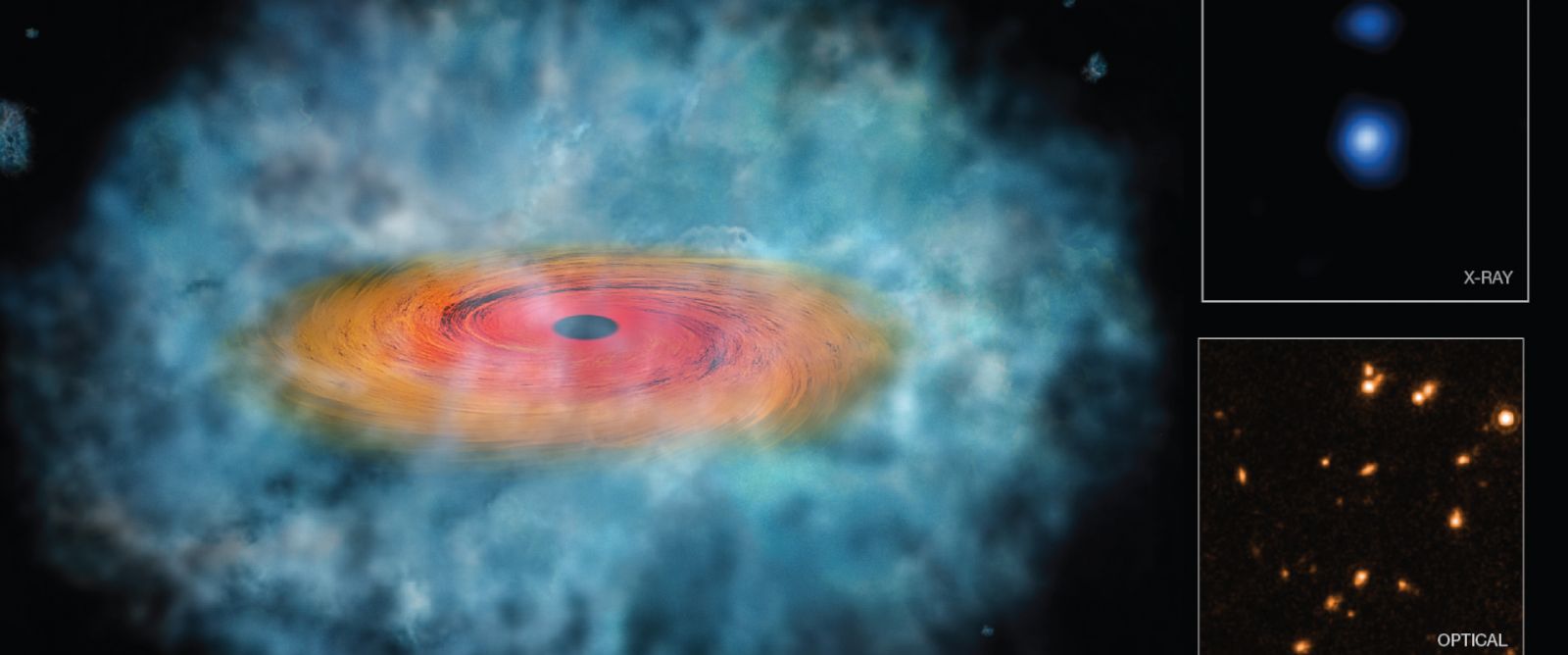Mystery of Massive Black Holes May Be Answered by NASA Telescopes
 This illustration represents the best evidence to date that the direct collapse of a gas cloud produced supermassive black holes in the early Universe. Researchers combined data from NASA's Chandra, Hubble, and Spitzer telescopes to make this discovery.>> view original
This illustration represents the best evidence to date that the direct collapse of a gas cloud produced supermassive black holes in the early Universe. Researchers combined data from NASA's Chandra, Hubble, and Spitzer telescopes to make this discovery.>> view originalRegeneron Named as Science Talent Search Sponsor
Regeneron Pharmaceuticals Inc. was selected as the new named sponsor of the Science Talent Search, making the biotechnology company the third corporate benefactor of the iconic 75-year-old high-school science competition once widely known as “the Westinghouse.” Regeneron, whose top two executives are alumni of the Science Talent Search competition, was selected from among some 50 companies and philanthropies that initially expressed...>> view originalThat study critiquing NASA's 'bad science' on asteroids is pretty bad science
(NASA illustration) On Monday, the New York Times published a piece on Nathan P. Myhrvold, former chief technologist of Microsoft. Myhrvold, who has built a reputation for himself as something of a patent troll, says he's shown that NASA's research on asteroids is a mess. Myhrvold has a PhD in physics, but no experience with asteroids — which he says makes him the perfect man to take this bad science down. Myhrvold's paper, which he's made available online, is 110 pages long and has not yet ..>> view originalScientists: Underground stone rings made by Neanderthals
BERLIN (AP) — Two mysterious stone rings found deep inside a French cave were probably built by Neanderthals about 176,500 years ago, proving that the ancient cousins of humans were capable of more complex behavior than previously thought, scientists say. The structures were made from hundreds of pillar-shaped mineral deposits, called stalagmites, which were chopped to a similar length and laid out in two oval patterns up to 40 centimeters (16 inches) inches high. They were discovered by chance..>> view originalBuilding a supermassive black hole? Skip the star
In the later Universe, supermassive black holes are easy to spot. It seems that nearly every galaxy has a supermassive black hole at its core. Based on the presence of extremely bright objects early in the Universe's history, it seems that this relationship goes back to the galaxy's very start—galaxies seem to have been built around these monstrous black holes. But this presents a bit of a problem. There's a limit to how fast black holes can grow, and they shouldn't have gotten to the superm..>> view originalLight bending trick reveals supremely old, faint galaxy
The triple-imaged galaxy as seen by the Hubble Space Telescope. The peaks along the same wavelength reveal that they come from the same source. Bradac/HST/W. M. Keck Observatory By looking far, far out into the universe, it is possible to see some of the earliest galaxies to ever form. Now, scientists have spotted a very early galaxy that's the faintest they have ever seen.The first galaxies to ever form in the ..>> view originalThe future of space travel could depend on this urgent race for asteroid resources
Whether it’s colonizing Mars or harvesting materials from asteroids, the future of space travel is all about embracing the cosmos as a frontier for human expansion—and also profit. Watch the video above to see how two US companies, Planetary Resources and Deep Space Industries, plan to mine asteroids within the next few decades. If their mission sounds familiar, it’s because it’s been a recurring plot line of sci-fi movies for decades, from Avatar to Armageddon. But this is no romantic quest to..>> view originalA new theory is close to solving one of the greatest mysteries of how life began on Earth
Life on Earth began some 4 billion years ago. But it shouldn’t have. In its lifecycle, at that time, a young star like our sun would have been radiating only about 70% as much energy as now. That would have made the Earth an icy ball. And so there would have been no liquid water to give life an essential ingredient it needed. Yet, we know from geological evidence that somehow life did start then. This is called the “faint young sun paradox,” and scientists have been trying hard to explain what ..>> view original
Thursday, May 26, 2016
Mystery of Massive Black Holes May Be Answered by NASA Telescopes and other top stories.
Subscribe to:
Post Comments (Atom)
No comments:
Post a Comment